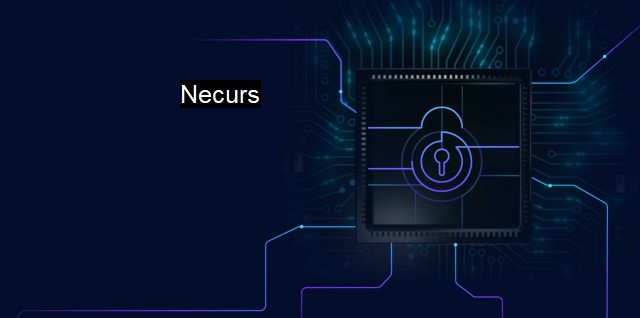What are Necurs?
The Danger of Necurs: An In-Depth Look into the Widespread and Pernicious Botnet Threatening Global Cybersecurity
Necurs is one of the most dangerous and widely spread botnets globally, causing significant concerns in the cybersecurity landscape. Since its activation in 2012, this potent and resilient menace has disturbed the digital world with an avalanche of unparalleled cyber-crimes, making it a significant subject within the cybersecurity and antivirus circles.At its core, Necurs is a type of malware, meaning it’s a malicious software designed to cause damage or unauthorized access to computing systems. Specifically, Necurs is categorized as a botnet, which is a network of compromised 'zombie' computers maliciously coordinated by a 'bot-master' or 'bot-herder.' Unknown to the legitimate user, these compromised computers perform a variety of mischievous tasks, ranging from hosting illicit content to launching powerful Distributed Denial of Service (DDoS) attacks on targeted web servers.
Necurs rose to infamy because of its multi-purpose kinematics. It’s a modular botnet, meaning it can be loaded with various components to execute diverse malicious activities as determined by its operators. Its primary function is believed to be spam email dissemination. Rumored to control over six million infected computers, Necurs is capable of dispatching billions of spam emails daily, endemic with malicious attachments or hyperlinks directing unsuspecting victims to malicious websites. Once clicked, these attachments covertly download Necurs onto the victim's system, making it part of the Necurs botnet army.
A unique and outstanding feature that sets Necurs apart in the botnet kingdom is its robust setup and hybrid communication architecture. It employs a user-mode rootkit, a kind of software that gains unauthorized access to the highest system level to monitor and manipulate system processes, giving it a resilient and stealthy composition. This makes it tremendously challenging to eliminate completely and contributes to its long, notorious life.
The botnet utilizes both direct (HTTP) and peer-to-peer (P2P) communication methods. The P2P communication method, where every infected computer acts both as a client and a server, is critical because it makes the botnet resistant to 'take-downs.' This resilience is cemented by its domain generation algorithm (DGA), which generates random combinations of domain names to which the botnet can connect, making it quite challenging for security agencies to track the botnets' operations progressively.
Necurs' operators are known to lease or rent their botnet infrastructure, known as "botnet-as-a-service." Cybercriminals rent access to the botnet to distribute their malware, spam, or carry out targeted attacks, providing Necurs' operators with a lucrative business model. To add to Necurs' notoriety, the botnet has been linked with the spread of ransomware like Locky and other potentially unwanted applications (PUAs) such as cryptocurrency miners and scareware.
Although antivirus or anti-malware software can eliminate and protect against Necurs to a certain extent, figured-out conventional methods have proven ineffective with advanced strains of Necurs due to its intricate rootkit and DGA capabilities. Therefore, cybersecurity experts are focusing on proactive multi-layered defense tactics, including regular software updates, increased email and web access scrutiny, using reliable antimalware tools, machine learning, AI-based systems, and user-awareness to combat the formidable menace brought about by Necurs.
In brief, Necurs is a symbol of the disturbing complexity and enhancing sophistication of modern-day cyber-crimes. Known for its multi-functionality, resilience, and adaptability, Necurs botnet recycles itself into diverse shades of evil to breach cybersecurity defenses and proliferate its malevolent operations. While countering its threats remains a matter of profoundly technical combat, individuals, companies, and even different nations, everyone must remain vigilant against such digitally orchestrated threats.

Necurs FAQs
What is Necurs in cybersecurity?
Necurs is a notorious botnet malware that infects computers and uses them to spew out spam email campaigns, distribute other malware, and commit various cyber crimes. It is known as one of the largest and most notorious botnets in the world.How does Necurs spread and infect computers?
Necurs typically spreads through malicious email attachments, botnets, or social engineering attacks. It exploits vulnerabilities in the target system to gain access and install itself silently. Once installed, it establishes communication with the command and control (C&C) server and starts executing malicious commands.What kind of damage can Necurs cause to my computer and network?
Necurs can cause serious damage to your computer and network by installing other malware, stealing sensitive information, initiating distributed denial-of-service attacks, and compromising your system's security. It can also turn your computer into a zombie machine for further cybercrime activities.How can I protect my computer and network from Necurs?
To protect your computer and network from Necurs, you should use reputable anti-virus software and keep it up-to-date. You should also avoid opening suspicious emails or clicking on links or attachments from unknown sources. Additionally, you should regularly update your operating system and software, use strong passwords, and implement security best practices.| | A | | | B | | | C | | | D | | | E | | | F | | | G | | | H | | | I | | | J | | | K | | | L | | | M | |
| | N | | | O | | | P | | | Q | | | R | | | S | | | T | | | U | | | V | | | W | | | X | | | Y | | | Z | |
| | 1 | | | 2 | | | 3 | | | 4 | | | 7 | | | 8 | | |||||||